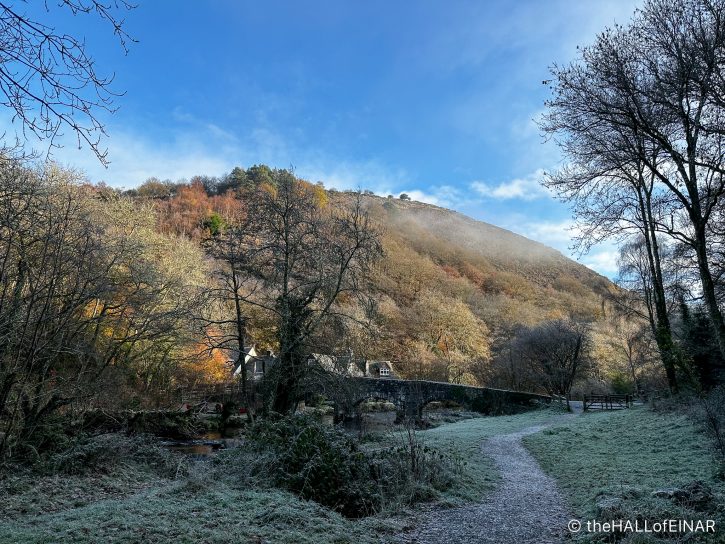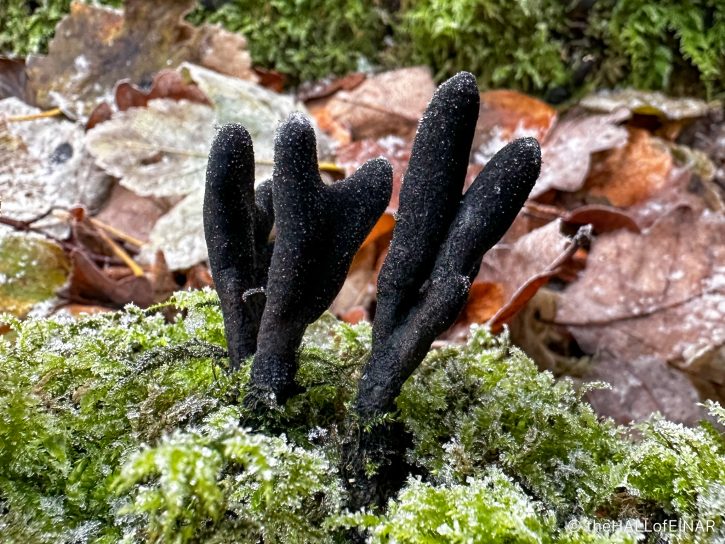Dead Man’s Fingers
It’s cold on Dartmoor but it’s always worth making it to Fingle Bridge. I’m looking forward to a pint in the pub later, but first it’s time to stride out.

There’s a fabulous fungus on this dead tree stump:

It’s called Dead Man’s Fingers and produces a range of strange finger-like shapes, all rounded and black, protruding from stumps. It’s a special kind of fungus because it doesn’t break down the lignin or cellulose of the dead tree, but feeds upon the much easier to digest polysaccharides.
Plants turn water and carbon dioxide gas into sugars by using sunlight. That’s the magic of photosynthesis, which sustains most life on Earth. They then join these sugars together into chains called polysaccharides. Poly means many and saccharide means sugar, so polysaccharides are ‘many sugars’ in a chain. One of the common polysaccharides is cellulose, which is the main plant fibre which makes up plant cell walls. Half of wood is cellulose, and cotton fibre is 90% cellulose. Cellulose is useful as the fibre in our diet and the clothes on our backs but we haven’t evolved the ability to digest it. You have to be a ruminant animal to do that, with a specialised stomach full of bacteria making a digestive soup inside your insides. Lignin adds strength and stiffness to plants and is found in wood and bark. It’s totally indigestible. Much of our coal deposits consist of lignin from plants.
I stumble back with a mind full of fungi, rotten trees, ruminants and coal deposits.
These Dead Man’s Fingers are taking the easy route and feeding on the simple to digest parts of a dead log. Who can blame them? Why bother with the effort of digesting a tricky meal when you can just eat something easy.
Back at the pub I look at the menu and decide to have the soup.